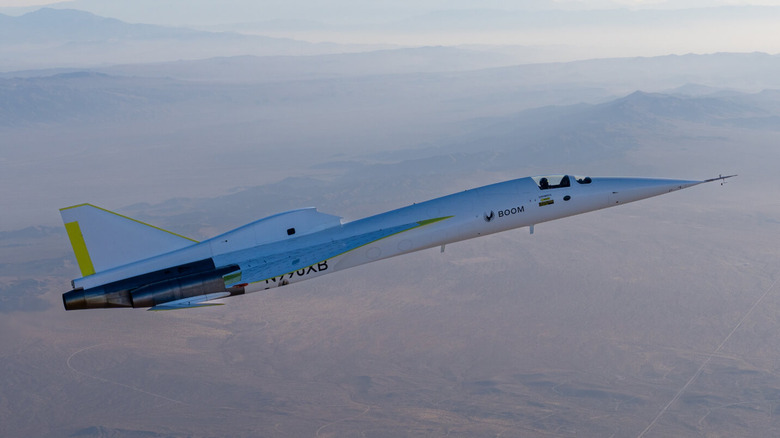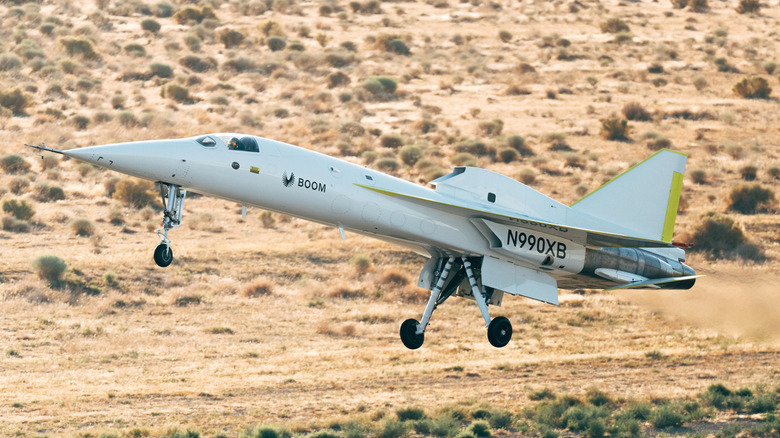Supersonic Flight Edges Closer To The Airport As Boom XB-1 Nails Its Second Test
It was in 2020 that Boom revealed the first proof-of-concept version of its XB-1 aircraft, setting the ambitious goal of bringing back supersonic commercial flight. Today, the company has announced the second successful test flight of its demonstrator supersonic aircraft at California's Mojave Air & Space Port. "I'm proud of the team. Today's flight is another step toward the return of supersonic passenger travel," Boom Supersonic CEO Blake Scholl was quoted as saying.
The test flight was piloted by Tristan "Geppetto" Brandenburg, who will also be at the helm of future evaluations and the plane's first supersonic journey, too. The key milestones of the second test flight were operational testing of the roll damper system, which is linked with what the company refers to as "digital stability augmentation," and retraction-extension of the landing gear. The company was also able to test the aerodynamic performance markers such as strength and direction of airflow.
The next phase of test flights is going to be critical. Boom says the XB-1 is targeting the Mach-1 barrier for assessing its handling and performance. The evaluation will also cover other crucial in-flight systems and how the aircraft handles system damping at the combination of high velocity and altitude. "The sequencing of test flights will increase through this next phase of testing with approximately 10 flights planned before reaching supersonic speeds," notes the company in its press release.
What's next for Boom and supersonic flight?
All the tech poured into the XB-1 will eventually make its way to the "Overture," the commercial supersonic aircraft that Boom is developing. Moreover, the company has also set a target of reaching supersonic flight tests before the end of 2024. To that end, Boom has already received the Special Flight Authorization (SFA) to exceed Mach 1 from the Federal Aviation Administration (FAA), a crucial regulatory step towards bringing back supersonic flights to the mainstream.
Roughly two decades after the Concorde bid goodbye to the business of supersonic commercial flights, Boom wants to bring the convenience back with some generous help from modern technology to overcome its successor's biggest flaws. One of the biggest problems associated with supersonic flights is the noise, aka the sonic boom, but Boom aims to address those acoustic worries by ditching the Concorde's reliance on afterburners. "Boom will address the impact of sonic booms by only exceeding Mach 1 when over the ocean, at a distance where sonic booms won't reach land. Overture will operate at subsonic speeds over land — at speeds about 20% faster than today's subsonic airliners — and meet today's ICAO Chapter 14 noise requirements in and around airport communities," Boom said in a statement shared with SlashGear.
This design aims to prevent the intense pressure waves often associated with faster-than-sound flight, potentially making high-speed civil aviation more palatable to communities near airports. Boom has already secured partnerships with the likes of Japan Airlines, American Airlines, and United Airlines for the Overture. How exactly these aviation giants plan on managing the high fuel costs and staying profitable with supersonic flight services would be interesting to see.

